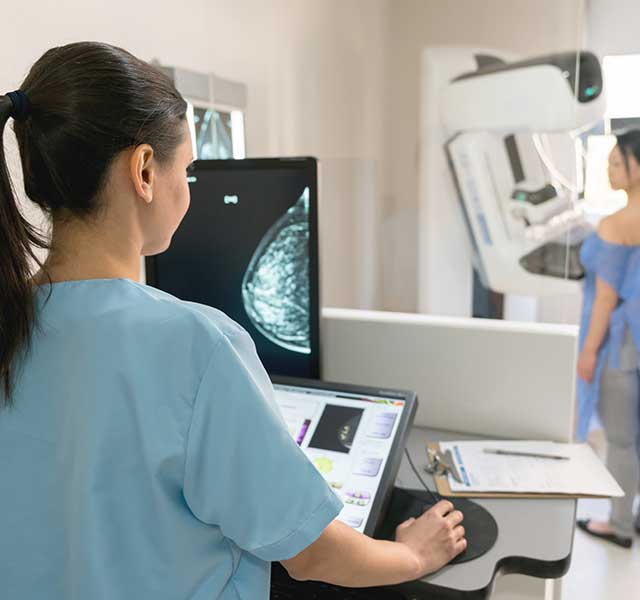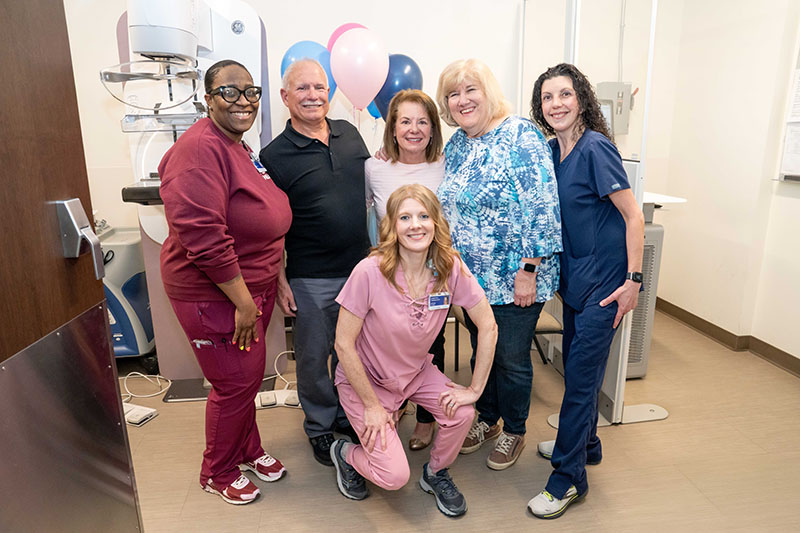Mammography & Breast Cancer Screening
Advanced technology to detect and diagnosis breast cancer, including 3D mammography.
Breast cancer can strike anyone – gender, age, health – making regular breast cancer screening important. When breast cancer is found at an early stage through regular mammograms, nearly 100 percent of patients live at least five years after their diagnosis.
Our screening tools, including mammography and advanced breast imaging exams like digital breast tomosynthesis (3D mammography), can detect cancer early, when it is most treatable. And, most exams only take 15 minutes!


What's the difference between a screening and diagnostic mammogram?
Breast screening and diagnostic tests
Our breast cancer team includes the expertise of a dedicated breast imaging faculty, featuring more than 15 fellowship-trained breast radiologists. We offer the most advanced technologies available to detect, diagnose and manage breast cancer:
- Mammograms, including digital mammograms and digital breast tomosynthesis (DBT, also called “3D mammography”), which is recommended for women with dense breasts
- Breast magnetic resonance imaging (MRI) is useful in special circumstances, such as screening women at high risk for breast cancer.
- Molecular breast imaging (MBI) is designed to increase early detection of invasive breast cancer in women with dense breast tissue. This test is used in addition to digital mammography or 3D mammography.
- Computed tomography (CT), including CT scans combined with positron emission tomography (PET/CT)
- Nuclear medicine
- Sentinel node biopsy, which is the surgical removal of only the sentinel lymph node under the arm, which provides important information for the doctor on the next steps in treating your breast cancer.
- Stereotactic biopsy, A minimally invasive procedure that uses x-ray for guidance and localizes the nodule to accurately obtain samples to send for testing.
-
Procedure
-
Preparation
-
Considerations
- You will need to undress from the waist up.
- The technologist will position your breasts to get the best test results.
- Each of your breasts will be compressed. This helps get the most complete x-ray image.
- Arrive 15 minutes prior to your scheduled appointment.
- Bring a prescription if your doctor has given one to you.
- Do not apply underarm deodorant, powders, ointments or creams to your chest area the day of your scheduled exam. These products can show up on the images.
- Bring prior mammography exams from other facilities with you at the time of the current exam.
- If you are lactating, please nurse or pump prior to your mammogram.
- If you are pregnant or could possibly be pregnant, screening mammography should be postponed until after pregnancy unless your physician determines there are clinical concerns. In this case, mammography should not be postponed and diagnostic mammography should be performed.
Coordinated, compassionate care makes all the difference

.svg?iar=0&hash=F6049510E33E4E6D8196C26CCC0A64A4)

/hfh-logo-main--white.svg?iar=0&hash=ED491CBFADFB7670FAE94559C98D7798)